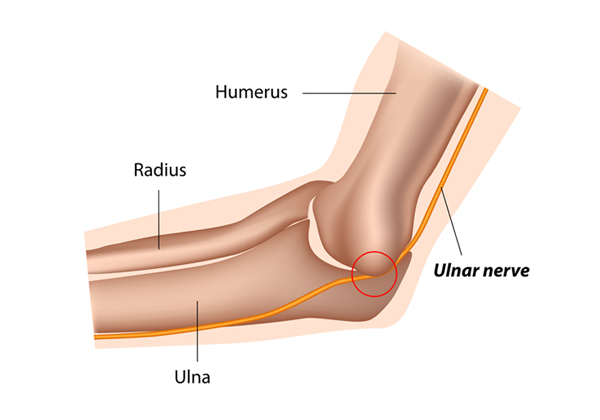Understanding Ulnar Nerve Surgery: Relief for Tingling and Weakness
Overview
The ulnar nerve is essential for feeling and movement in your hand. When this nerve becomes compressed, especially around the elbow, it can cause pain, numbness, and weakness. Ulnar nerve surgery can alleviate these symptoms and improve hand function.
What is the Ulnar Nerve?
The ulnar nerve travels from your neck, through your elbow, and down to your hand. It provides sensation to your ring and little fingers and controls some muscles in your hand and forearm, allowing for fine motor skills and grip strength.
What Causes Ulnar Nerve Decompression?
The ulnar nerve can become compressed at the elbow or wrist due to various factors, including:
- Repetitive motions: Leaning on your elbow for long periods or frequently bending your elbow can irritate the nerve.
- Direct blow: A hit to the inside of your elbow can damage the nerve.
- Fluid buildup: Swelling in the elbow can compress the nerve.
- Medical conditions: Arthritis or other conditions can contribute to nerve compression.
Symptoms of Ulnar Nerve Compression
- Tingling and numbness: This usually affects the ring and little fingers, often worsening at night or with prolonged elbow bending.
- Weakness: Difficulty gripping objects, pinching, or coordinating finger movements.
- Muscle wasting: In severe cases, muscles in the hand may weaken and shrink.
- Pain: Aching pain on the inside of the elbow or radiating into the hand.
Treatment Options
Non-surgical treatments like physical therapy, splinting, and medication are often tried first. However, if these fail to improve symptoms or if nerve damage is severe, Ulnar Nerve surgery might be recommended.
Surgery For Ulnar Nerve Compression
This minimally invasive surgery aims to relieve pressure on the nerve. The surgeon makes an incision near the affected area (elbow or wrist) and:
- Cubital Tunnel Release (Elbow): Cuts the ligament roof of the cubital tunnel, creating more space for the nerve.
- Ulnar Nerve Transposition (Elbow): In some cases, the nerve may be repositioned to a safer location.
- Wrist Decompression (Wrist): Releases pressure on the nerve at the wrist.
Recovery
After Ulnar Nerve surgery, you may need to wear a splint for 2-6 weeks, followed by physical therapy to regain strength and movement. Recovery time can vary depending on the severity of the condition and the type of surgery performed.
Surgical Outcomes
The Surgery is generally successful, with most patients experiencing significant improvement in symptoms. However, the recovery of Ulnar Nerve surgery can be slow, and complete recovery is not always guaranteed, especially in severe cases with permanent nerve damage.
Remember
If you experience persistent numbness, tingling, weakness, or pain in your hand or arm, especially near the elbow, consult your doctor to discuss potential causes and treatment options, including ulnar nerve decompression surgery.

